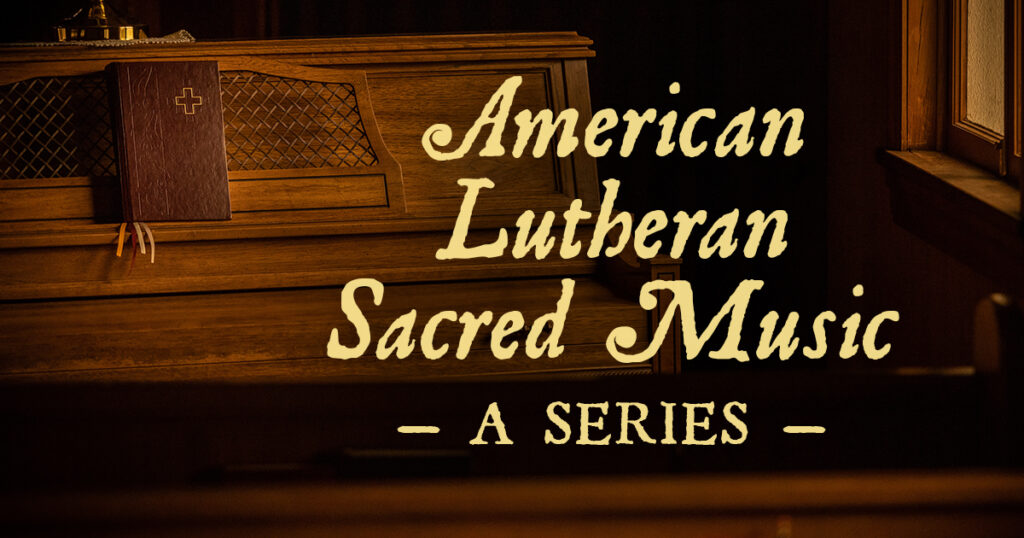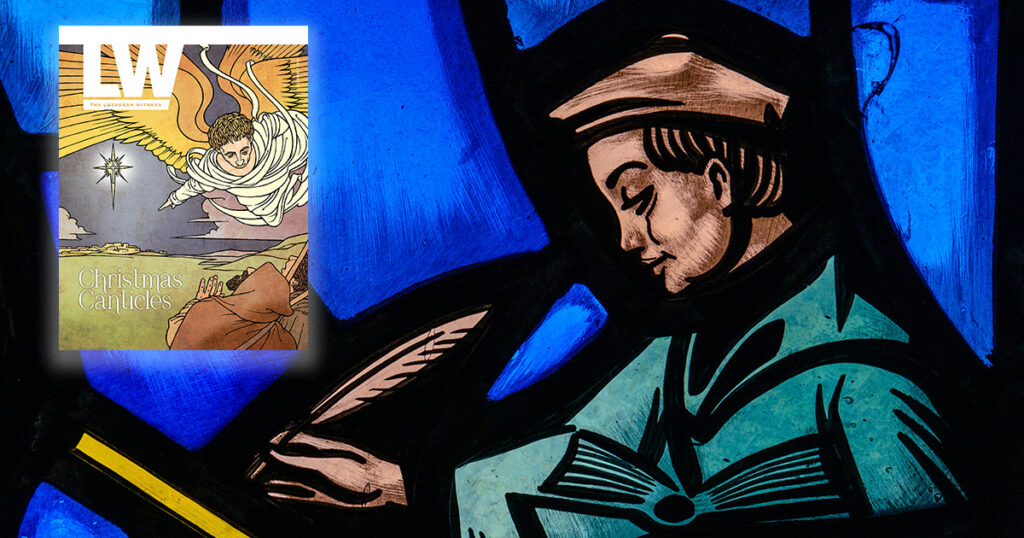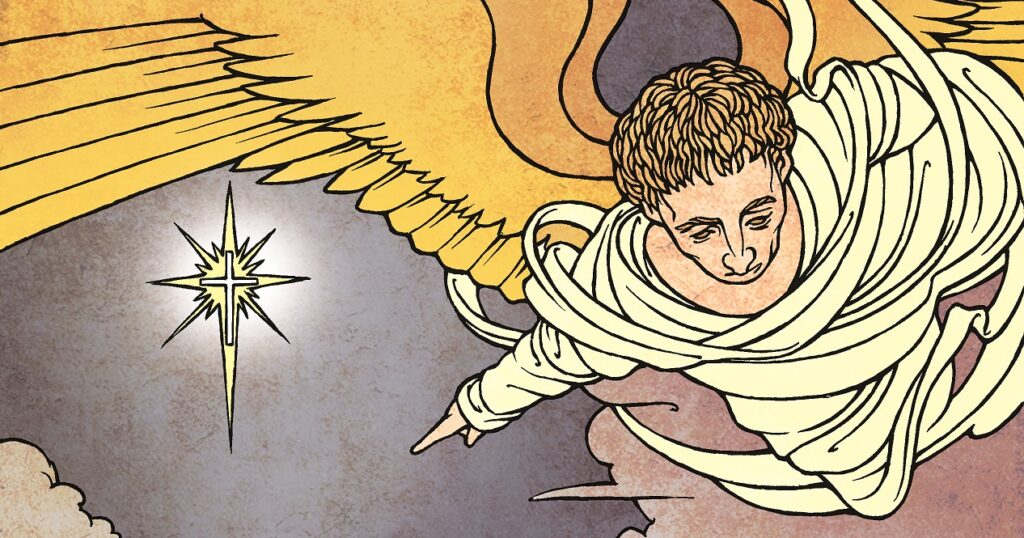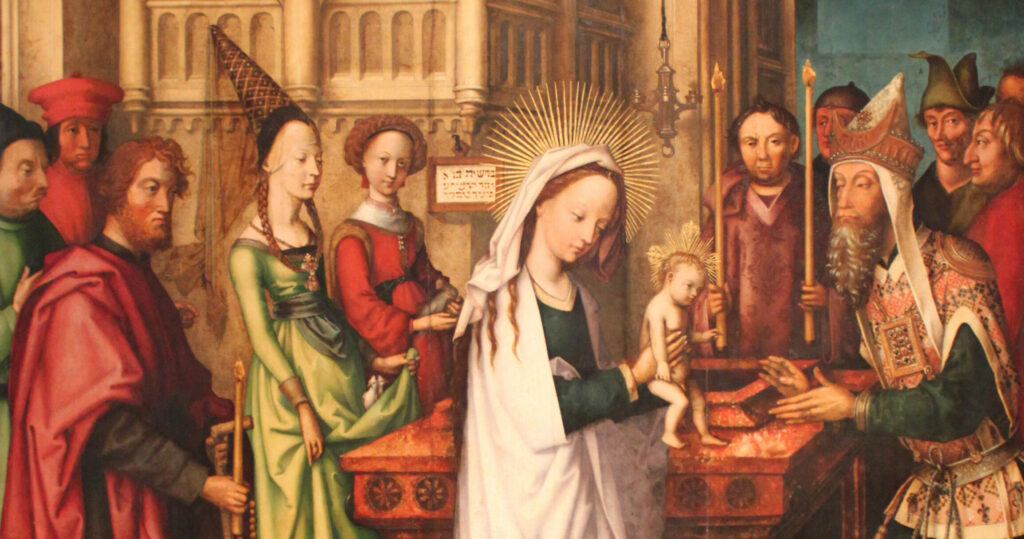In this series, Benjamin Kolodziej will reflect on several figures in American Lutheran sacred music history. This series is based on his new book Portraits in American Lutheran Sacred Music, 1847–1947 (Concordia Publishing House), which is available now from CPH.

The Missouri Synod produced thousands of teachers in its first decades, teachers trained and equipped to lead basic school music and to serve as parish organists. It was not their vocation to serve as personal organist to great families on the East Coast, nor to study with illustrious European organists, nor to tour the country to the acclaim of thousands of enthusiasts. Nor did most organ performers, Lutheran or otherwise, view themselves as musical evangelists, employing the Lutheran chorale as their primary repertoire to spread the Gospel. That is, until Edward Rechlin, whose unrivalled keyboard virtuosity and passionate advocacy for Lutheran music propelled him to heights heretofore never experienced by a Missouri Synod organist.
Life as a School Teacher
Born on Oct. 5, 1884, Rechlin (pronounced Rech-LEEN) studied at the Addison seminary outside Chicago, where his father taught mathematics.[1]Graduating in 1902, his preparation as a Lutheran school teacher involved study of violin, voice, organ, piano and music theory. [2] The young organist’s first call, to Trinity in St. Louis, scarcely 15 years after Walther’s death, found him frantically teaching, and playing organ only once every third Sunday of the month. Rechlin remembered with some humor that the congregation would lie “in wait for its favorite performer [organist], often for a period of 5 to 6 weeks! To the glory of these faithful performers … they all faithfully offered their wares from the Musical Heritage of the Church.”[3] Desiring further musical training, Rechlin studied privately in St. Louis with Charles Galloway, a former student of Alexandre Guilmant, an eminent composer and organist in Paris. Rechlin found himself enthralled with Guilmant’s performances at the St. Louis World’s Fair in 1904, at which time he seems to have set his sights on a musical career apart from that of a school teacher, resigning from Trinity in 1905 and moving to study piano at the American Conservatory in Chicago.
By late 1905, Rechlin had accepted a call to Immanuel Lutheran in Manhattan, N.Y., where the pastor, the Rev. William Schoenfeld, encouraged everything artistic, musical and liturgical. Rechlin flourished there.
Study in Europe
In 1909, Rechlin journeyed to Paris to study with Guilmant, who would later endorse the Lutheran organist: “He is an excellent organist, fine musician, and possesses a splendid execution.”[4] Rechlin’s Parisian sojourn, which included partaking of Wagner and Verdi operas in the resplendent, lavish environs of post-fin de siècle Paris, opened to him a world of artistic sensations unlike anything he had experienced in his traditional German Lutheran background. Thus inspired, he returned to Paris during the summer of 1913 to study with Charles-Marie Widor in Paris, Widor sanctioning the young organist’s studies, noting that “I was very satisfied with his talent as an organist in addition to his intelligence.”[5] Thus was Rechlin the first Missouri Synod organist to study in Europe, claiming, too, dual pedagogical lineage back to Johann Sebastian Bach through Widor and Guilmant.
Concerts and Chorales
During the 1920s, Rechlin’s performance career thrived as he played at least three times at the mansion of Joseph Pulitzer[6] and at the White House for President Wilson, and occasionally accompanied rehearsals for opera notables.[7]Rechlin had so enthused a certain Rev. Otto Pannkoke that Pannkoke remembered that “Many times I sat in the church listening to the intricacy of a Bach Fugue or to an improvisation on one of the great Lutheran chorales. Rechlin was a masterful improviser, had brilliant technical proficiency and lived in the music of the Reformation.”[8] Pannkoke, whose personal vocation had been to assist Lutheran churches in marketing themselves, perceived an opportunity in the organist’s talents, for many years thereafter acting as Rechlin’s personal manager, refining his reputation as “America’s Foremost Bach Interpreter.” Pannkoke praised Rechlin as he proffered his wares to Missouri Synod churches:
Mr. Rechlin is a Lutheran musician. He understands Lutheran music perhaps as no other man in this country. He believes in Lutheran music, its historic importance within our church, its place within our service today. While as a musician of highest quality he belongs to the world, his great opportunity lies before him in the guidance and inspiration that he can bring to our Church, to value and develop its precious heritage of true Lutheran Church music.[9]
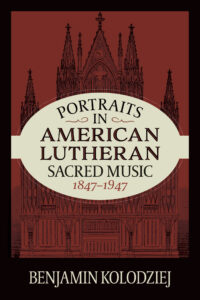
Pannkoke arranged for Rechlin to accompany the St. Olaf Choir, under the direction of F. Melius Christiansen, including at Carnegie Hall in New York. The choir’s emphasis on sacred music, and hymnody in particular, had whetted Rechlin’s appetite for the Lutheran chorale. Rechlin’s concerts thereafter began intentionally to promote the music of Bach and baroque composers generally, but more specifically, repertoire based on the Lutheran chorale. In 1920, he undertook a tour as a “musical missionary” for the music of Bach.[10]
Between 1920 and 1928, his concerts featuring the music of the Lutheran chorale reached more than half a million listeners. Rechlin viewed himself as an evangelist in music, recalling that “I used to play a certain number of classics and modern pieces, along with orchestral things transcribed for the organ … but I could not see that I was reaching the hearts of my hearers.”[11] As Rechlin settled into his role as a self-appointed musical evangelist, he wrote:
In its organ-music the Lutheran Church possesses a heritage and treasure unequalled in the history of music. This is automatically guaranteed by its chief figure, Johann Sebastian Bach, and other immortals.
And to whom was it necessary to advertise this priceless treasure? To none other than the Lutheran Church itself, almost totally in ignorance of it, having discarded its usage for something far inferior, so that the Church, instead of presenting itself to its membership as the grateful owner of a unique glory, was content to stand forth as being identified with a lower grade of music, in common with others. And thus a glorious opportunity was lost to advertise one of the Church’s greatest assets to its members, especially to its youth.[12]
Increasingly, he would prepare concert improvisations based on hymn tunes. One of the more creative iterations was his “Tale of Two Cities,” weaving together hymn tunes associated with Christmas (Bethlehem) and Lent/Easter (Jerusalem).
As Rechlin’s concert career flourished, he accepted employment as personal organist for Lady Duveen, the wife of British art broker Sir Joseph Duveen, who had acquired a fortune selling all manner of artwork to the likes of Andrew Mellon, Henry Clay Frick and John D. Rockefeller. Sir Duveen “frequently hosted dinner parties at his Fifth Avenue residence; while Rechlin played the pipe organ after dinner, Duveen invited the prospective buyers to examine the paintings of van Gogh, Titian, and Rembrandt which were hanging about the mansion.”[13] Travel with the Duveens allowed Rechlin to perform recitals in Germany, Holland, Sweden, Denmark and Rome.[14]In 1930, Rechlin performed in Augsburg, Germany, for an international celebration of the 400th anniversary of the Augsburg Confession, performing all baroque music, emphasizing the chorale.[15] One reviewer thought Rechlin’s performance outshone that of Albert Schweitzer, the renowned humanitarian and organist.[16] After the Duveens moved permanently to London, Rechlin accepted employment with aristocrat Nora Mellon, former wife of financier Andrew Mellon.
Rechlin’s Legacy
In 1919, the Rev. Schoenfeld, long a source of encouragement to Rechlin, died, and his career would take him increasingly away from Immanuel, from which he finally resigned in the 1930s. Rechlin considered the 1940s his “workshop” period, teaching organists throughout the country, most notably at Concordia Teachers College in River Forest, and at church music seminars at Valparaiso University. He embraced the role of an elder statesman in Lutheran sacred music, believing that “We cannot afford to be amateurs in the understanding of the music of the church. We must learn to know what it stands for, what it does, and to do that we must lay as a sound foundation a good training in all music, secular as well as church.”[17] Ever the pragmatist and the populist, Rechlin abhorred the high church movement as well as the new discipline of historical musicology. He railed against the liturgical movement, while his own improvisations were couched in familiar, folksy harmonies, which he thought would appeal to the “common” people. Eventually considering himself a “Free Ministrel,” he bore his love of the Lutheran chorale, and the Gospel, throughout the country. Edward Rechlin died in 1961.
No other Missouri Synod organist had as “modern” of a career as Rechlin, his professional life spent in the service of the Gospel through performance rather than through composition, teaching or parish ministry. Yet, it is Rechlin’s faithfulness to the Gospel that we should commend today, a fealty he recognized as authentically transmitted through the chorale texts, and the tunes which convey them. His passion for the hymnody of the Reformation animated his life and career, allowing the organ, so often a voiceless instrument, to speak the texts of Luther and Gerhardt.
[1] “Prof. Rechlin Gestorben,” Scranton Wochenblatt, December 23, 1915: 1.
[2] Unless otherwise noted, subsequent biographical particulars are taken from Mark Paul Bangert, Edward Rechlin: Organist and Musician of the Church (PhD diss., University of Minnesota, 1984).
[3] Edward Rechlin, “St. Louis,” Rechlin Papers, quoted in Bangert,” 30.
[4] Note from Guilmant, July 23, 1910, quoted in Bangert, 68.
[5] Note from Widor, August 13, 1913, in the possession of Fred Rechlin, quoted in Bangert, 70.
[6] Edward Rechlin, “Review Scrapbook I,” p. AA, Rechlin Papers, quoted in Bangert, 80.
[7] “Rechlin Plays for Beecham, The Diapason 19, no. 4 (March 1928): 41.
[8] Otto Pannkoke, A Great Church Finds Itself (Quitman, GA: Self-Published, 1966): 62.
[9] Otto Hermann Pannkoke, “Edward Rechlin, Premier Lutheran Organist,” American Lutheran Survey 10, no. 20(September 10, 1919): 618.
[10] Bangert, Rechlin, 115.
[11] Winthrop P. Tryon, “Organ Music, and Its Interpretation,” Christian Science Monitor, June 14, 1924, 21.
[12] Edward Rechlin, “The Publicity Value of Lutheran Organ Music,” The American Lutheran 7, no. 11(November, 1924): 153
[13] Bangert, Rechlin, 81.
[14] Bangert, Rechlin, 35.
[15] Bangert, Rechlin, 101.
[16] Review from the Augsburger Abendzeitung, June 27, 1930, in “Reviews 1930-1931, Keyfel Portfolio,” Rechlin Papers, quoted in Bangert, 101.
[17] Edward Rechlin, “Smug Amateurism,” unpublished essay delivered at the Church Music Conference, River Forest, IL, August, 1941, quoted in Bangert, 207.


